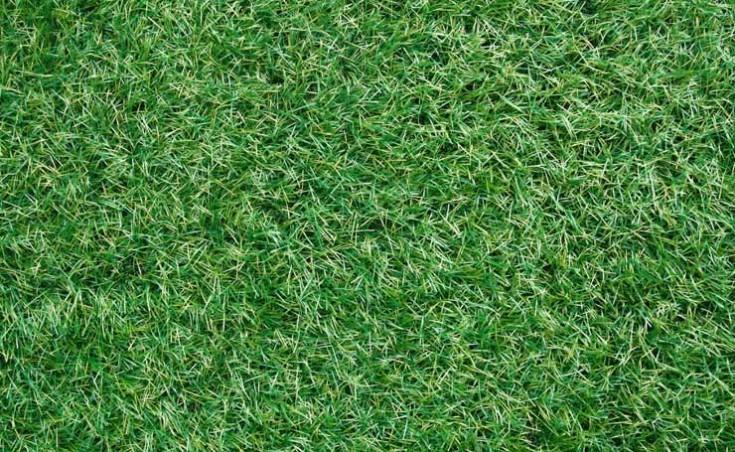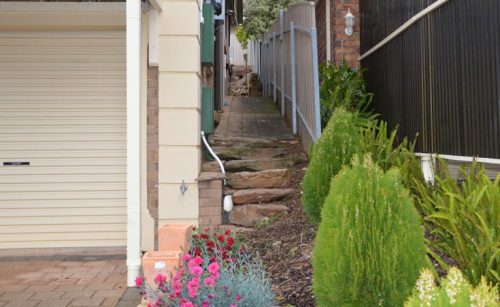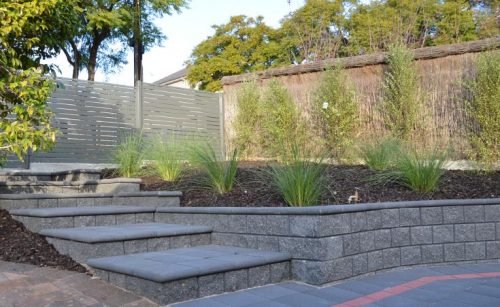DIY Guide to Laying Synthetic Grass Yourself.
Licensed landscapers from Visual Landscape Gardening are on hand to supply your synthetic grass, deliver landscaping supplies, even landscaping equipment hire with operator to help with laying your new artificial grass if you require.
Before you start
Before you order your synthetic grass, there are a few things you should do to prepare the area.
The first thing to do when preparing to lay synthetic grass is to make sure there is none of the old grass or weeds still growing in the area.
Remove all weeds and grass by spraying the area with a glyphossate base chemical like ‘Roundup’. Leave the area for at least 2 weeks then remove the dead grass and weeds to a depth of at least 100mm.Check the composition of the soil you have. If you have a heavy clay based soil composition, dig in a good layer of Gypsum; which will break down the clay giving you better drainage too.
Spread out about 50mm of quarry rubble, water with a hose then compact with a heavy roller or compacting plate, then spread out about 50mm of quarry sand, watering and compacting again. You should finish up with a level hard surface to lay your synthetic grass on.
Note: string lines are important to help you get an even level. A long metal screed is useful to obtain a smooth finish; you don’t want to have the ground feel ‘lumpy’ under foot.
Order Your Choice Of Artificial Grass
Feel free to discuss the best artificial grass from the range of 4 artificial grasses with the landscapers from Visual Landscape Gardening; we are here to help you!
Artificial grass comes in 20 metre long rolls between 3.5 to 4.0 metres wide. To order, simply let us know the length and width of the area you wish to cover and we will calculate the amount you will require.
Laying Your Synthetic Grass
Roll out your lawn working on one length at a time. The lawn should be stretched out by pulling it; this requires at least a second person to help. Butt the joins closely together and cut off any excess with a knife.
Synthetic grass joining tape under the joins will help keep the 2 pieces close together.
All artificial grass has a ‘grain’ to it, so make sure that the pile all runs in the same direction, to minimise the appearance of your joins.
Nail the Synthetic Grass Down
Special ‘Plain Shank Flathead’ nails, galvanised for outdoor use are used to hold the synthetic grass down, spaced about 1 metre apart in all directions.
Top Dressing
Spread fine sand, evenly all over your new synthetic grass then with a power brush, run over it in all directions. This will ensure that the pile is raised and consistent across the entire area, giving you a perfect ‘manicured’ look.
Ongoing Maintenance
Depending on the foot traffic your synthetic grass gets, you may need to give it a brush to lift the fibres up from time to time. Raking up leaves and gum tree nuts with a plastic rake may be required; you could watch the children do it for pocket money once a week!
If you find your dog messes on the grass, don’t fret. Simply pick up what you can and wash the rest in with the garden hose. A spray of disinfectant after will kill off any bacteria, make the area smell nice and also discourage the dog from doing it in that spot again. The same process can be followed if urinated on.
Supply Tips:
Removing 100mm of soil over even a small area adds up to quite a large amount of soil that needs to be discarded; approximately 20m² by 100mm equals about 4 tonne.
Visual Landscape Gardening offer landscaping equipment hire, including bobcat and truck hire with operators and drivers to excavate and take away the old soil for you.
As licensed landscapers, the team are also able to deliver and install the base quarry rubble and quarry sand for you, ready for you to roll out your new lawn and you’ll find their friendly, expert advise invaluable.



 Artificial Grass Installers
Artificial Grass Installers Child Care Centre Landscaping
Child Care Centre Landscaping Tight Access Landscaping Adelaide
Tight Access Landscaping Adelaide

